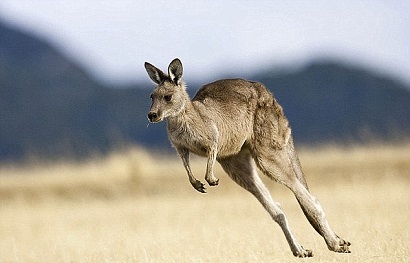Kangaroos may be famed for bouncing, but 24 million years ago, some couldn’t hop and instead climbed trees to forage for food.
Two new species of extinct kangaroos that lived in ancient rainforests between 24 and 18 million years ago, have been discovered .
They were a lot larger and heavier than other diminutive ancient ‘kangaroos’ and had fearsome fangs, despite being predominantly vegetarian.
They are related to bettongs and potoroos – members of the rat-kangaroo family, according to Dr Kenny Travouillon, Curator of Mammalogy.
Gumardee springae lived about 24 million years ago, while Gumardee richi lived between 20 and 18 million years ago.
Dr Travouillon said that like bettongs and potoroos, these new discoveries have a set of fangs, or very long premolars teeth which bettongs and potoroos use to chew fungi.
The study does not reveal just how long the species’ premolars are and the jawbones found mostly have molars intact.
But unlike Bettongs and potoroos, which are small and weigh just 18 to 123 ounces (500g to 3.5kg) the two new species are larger, weighing between nine and 13lbs (4-6kg) giving them the nickname of giant bettong.
The study was published along with another about the diet and movement of ancient Kangaroos, co-authored by Dr Travouillon.
‘In this second study, we have found that ancient kangaroos didn’t feed on grass like most kangaroos do today, but instead some ate leaves from trees and shrubs (browsers), while others ate a wide variety of foods (omnivore).
He continued: ‘One of the new species (Gumardee springae) was found to be predominantly a leaf eater.
We also found that some members of the ancient family of fanged-kangaroos, which was thought to be unable to hop were actually probably able to climb trees instead, while others hopped on the ground.’
This study is significant because it shows that kangaroos evolved the ability to climb trees at least twice – a feature for which they are not well-known.
Today, there are several species of Tree-kangaroos, two living in the rainforests, and 10 others living in surrounding islands.
Source: Daily mail
N.H.Kh

